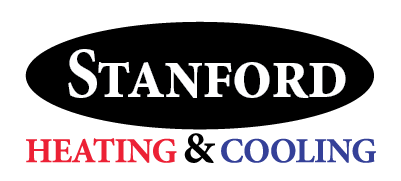
You might not think often about how your air conditioner works, but it depends on refrigerant to keep your home cool. This refrigerant is subject to environmental regulation, since it contains chemicals.
Subject to when your air conditioner was installed, it may need R-22, R-410A or R-32 refrigerant. We’ll review the differences and which air conditioner refrigerants are being phased out in Bloomfield, plus how these phaseouts affect you.
What’s R-22 and Why Is It Discontinued?
If your air conditioner was put in before 2010, it likely contains Freon®. You can learn if your air conditioner contains it by calling us at 812-825-8695. You can also look at the name plate on your air conditioner condenser, which is located outside your house. This sticker will contain details on what model of refrigerant your AC has.
Freon, which is also known as R-22, contains chlorine. Scientists consider Freon to be damaging to the earth’s ozone layer and one that results in global warming. The Environmental Protection Agency, which governs refrigerants in the United States, banned its production and import in January 2020.
I Have a R-22 Air Conditioner. Should I Replace It?
It varies. If your air conditioning is running as designed, you can continue to keep it. With regular air conditioner maintenance, you can expect your AC to run around 15–20 years. However, the Department of Energy says that substituting a 10-year-old air conditioner could save you 20–40% on annual cooling expenses!
If you don’t get a new air conditioner, it may create difficulties if you have to have air conditioning repair later on, specifically for refrigerant. Repairs may be more expensive, since only small levels of recycled and reclaimed R-22 is available.
With the discontinuation of R-22, a lot of new air conditioners now have Puron®. Also known as R-410A, this refrigerant was created to keep the ozone layer strong. As it calls for a varying pressure level, it isn’t compatible with air conditioners that use R-22 for cooling.
However, Puron still has the likelihood to contribute to global warming. As a consequence, it could also eventually be discontinued. Although it hasn’t been communicated yet for residential air conditioners, it’s likely sometime this decade.
What Refrigerant Will Replace R-410A?
In preparation of the discontinuation, some brands have initiated using R-32 in new air conditioners. This refrigerant ranks low for global warming potential—approximately one-third less than R-410A. And it also lowers energy use by around 10%, according to the Intergovernmental Panel on Climate Change’s Fourth Assessment Report. That’s savings that might be forwarded on to you through your utility costs.
Stanford Heating & Cooling Can Provide Support with All Your Air Conditioning Needs
In short, the changes to air conditioner refrigerant probably won’t concern you greatly until you require repairs. But as we discussed previously, refrigerant-related repairs might be more costly because of the restricted quantities available.
Aside from that, your air conditioner often breaks down at the worst time, often on the warmest day when we’re getting a lot of other requests for AC repair.
If your air conditioner requires a discontinued refrigerant or is getting old, we recommend getting a new, energy-efficient air conditioner. This provides a stress-free summer and could even decrease your electrical expenses, especially if you select an ENERGY STAR®-rated system. Plus, Stanford Heating & Cooling has many financing options to make your new air conditioner fit your budget. Contact us at 812-825-8695 to get started right away with a free estimate.

